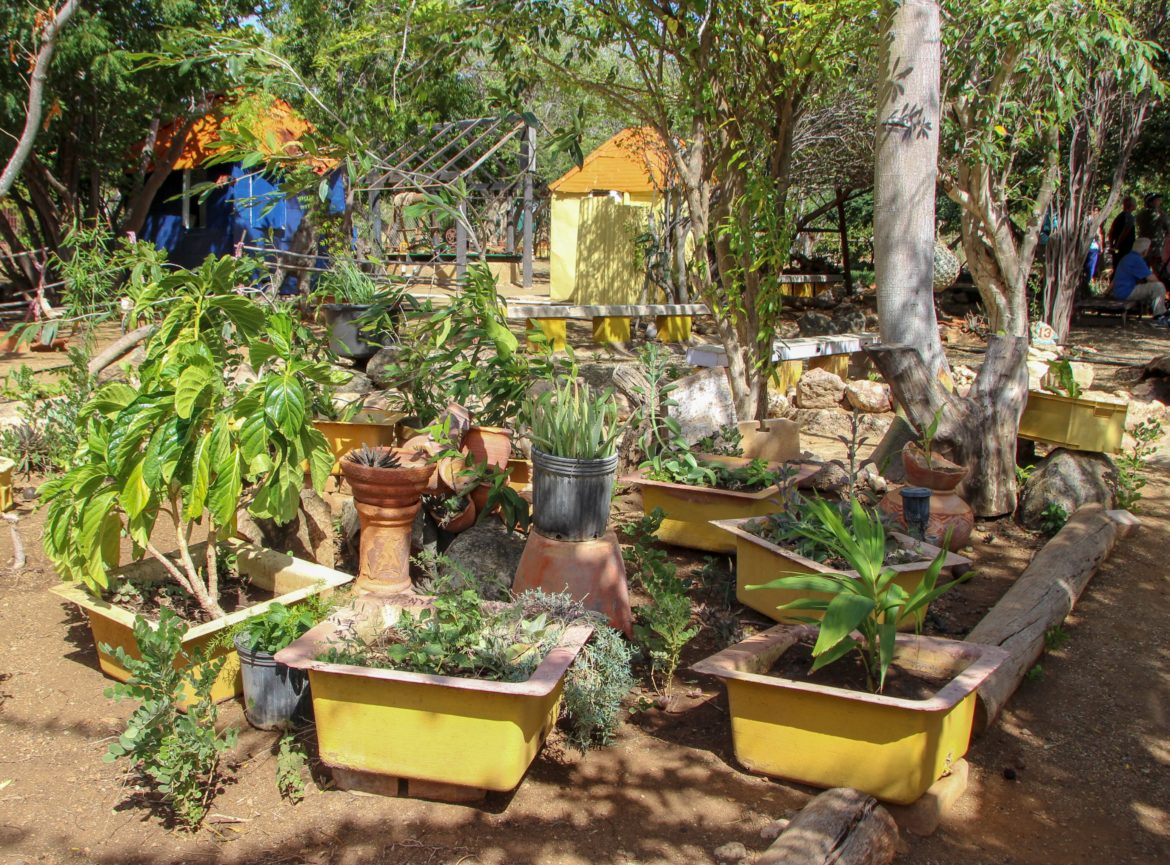Curacao’s Den Paradera is a gem, off the beaten path of the popular tours. Amidst sparkling turquoise waters, Curacao, the Dutch Caribbean Island is visibly north of Venezuela on a clear day. Also, it’s part of the island trilogy known as the ABC’s, along with Bonaire and the more well known, Aruba. As an Acupuncturist & Herbalist, I enjoyed my Ecotourism at the herbal medicine garden of Dinah Veeris, named Den Paradera. So, read on to learn about this sustainable destination.
Related: Curacao’s Curaloe Ecotourism & Health Benefits of Aloe Vera
Dinah Veeris’ Vision: Curacao’s Den Paradera
In the 80’s Dinah Veeris interviewed the elders of the island on the herbal medicines grown on the island to preserve their wisdom. Most noteworthy, the ABC islands are almost desert climates, with less than 20 inches of rainfall per year. For 5 years she traced and recovered more than 300 different plant species. Furthermore, if a species disappeared on Curacao, she traced them in Aruba or Bonaire and brought them back to cultivate.
Dinah sustained this knowledge for future generations by writing a book, Green Remedies & Golden Customs of our Ancestors. And, most importantly, she planted the herbal medicine garden, Den Paradera. She currently has no books available in English, only Dutch. However, I visited her garden, which is open to the public for viewing. Plus, in Curacao, the store sells her healing products and a very useful, laminated guide. For example, it has photos and remedies on the healing plants, flowers and trees of Aruba, Bonaire and Curacao, in English and Dutch.
Related: Colorful Willemstad, Curacao Top 15 Attractions
Curacao’s Den Paradera “the place where you feel at home”
The name history of Dinah’s garden is interesting, starting with the Paraguiri Indians, that originally had the biggest herbal garden on the island. The Spaniards brought their slaves to the Indians and called the location En Paradera. It later changed by the locals to Den Paradera, meaning “the place where you feel at home.” With a dry micro-climate, the ABC’s produce unique species of many well-known herbs.
Dinah Veeris established Den Paradera Botanical Gardens in 1991 on 1-acre of land. I enjoyed my organized tour, led by Dinah’s son. He took us through the garden to learn about the herbal medicine and its counterpart, music. Many of the plants were also used to make musical instruments. He compared the healing and music to the yin and yang natures of the plants. This is the language of East Asian Medicine (I’m an Acupuncturist), so this resonated with me. Also, a prominent healing plant for music is the Calabash, creating a gourd hollowed to make rattles.
3 Sections: Botanical, Historical & Production
Overall, Den Paradera is organized in 3 sections: botanical, historical and production. The botanical area is rich with biodiversity, displaying the 300 mostly labeled plant species, unique to these islands. For example, plants on site are oleander, cotton, basil, oregano, agave, aloe, tamarind, black sage, flower fence and sweet and sour sop.
The sour (aka Seville) oranges of Curacao were imported by the Spaniards. The help make the famous blue Curacao Liquor. Also, the production area has vintage gardening tools and equipment on display. I notice various tools, such as, pots, wheelbarrows, lanterns, pitchers, scales, pitchers and other unknown items. Plus, in the historical section, there are examples of Kunuku dwellings, the typical country homes in Curacao’s past with life size dolls in traditional clothing.
Overall…
Lastly, our tour ended with a performance by 2 performers doing traditional Curacao dancing. It exotically blends European and African (Curacao was a Caribbean hub for slave trade) styles. And finally, we got to meet Dinah Veeris, who came out to greet and welcome us to her gardens. I was so grateful to visit this site and learn about all that Dinah has accomplished. She created a portal to the past, so visitors connect with the roots of herbal medicine, that is sustainable for future generations.







